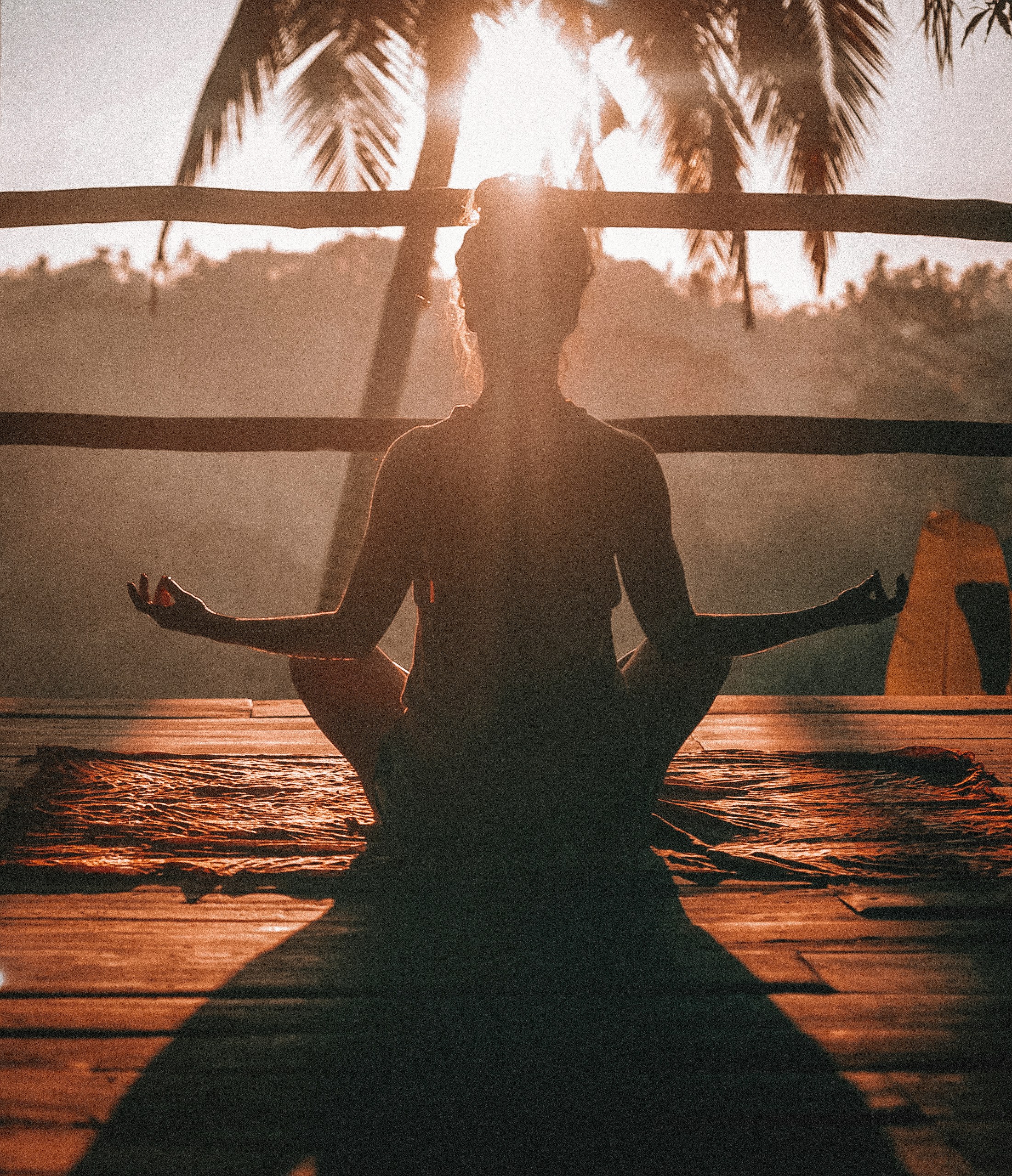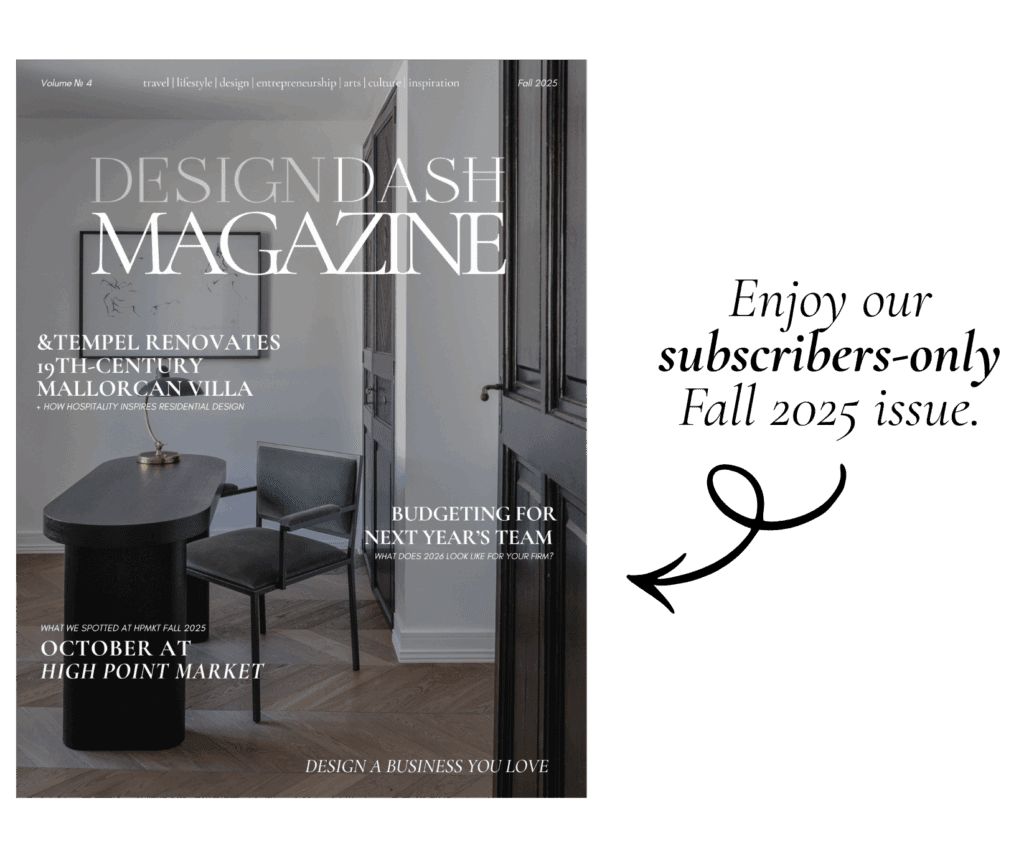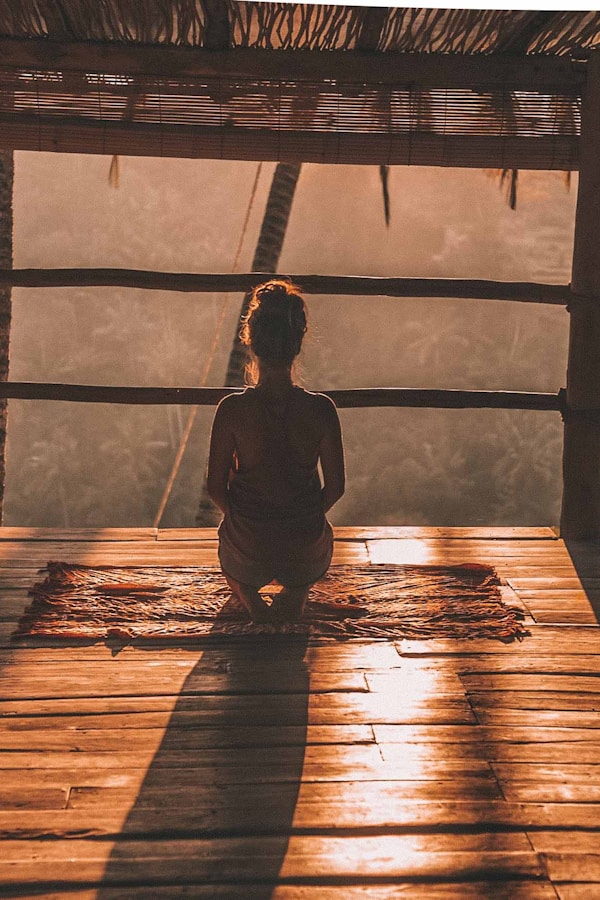
How to Meditate as a Beginner
Summary
Meditation isn’t about sitting perfectly still with an empty mind. It’s about learning to notice what’s already there — breath, thoughts, restlessness — without trying to fix it. A beginner practice can be as simple as sitting quietly for five minutes, focusing on the breath, and gently returning to it whenever the mind wanders. Over time, those quiet minutes create a kind of steadiness that lingers beyond the cushion.
Reflection Questions
What expectations do you bring to the idea of meditation — and where do those come from?
How might just five minutes of quiet affect the way the rest of your day unfolds?
What resistance comes up when you imagine sitting still with no distractions?
Journal Prompt
Before your first (or next) meditation session, write down what you hope to get out of it — then return to those notes afterward. What changed? What stayed the same?
Written by a Guest Contributor
This article was contributed by an external writer and does not necessarily reflect the views or editorial standards of the DesignDash team.
Finding a moment of peace can feel elusive in our hyper-connected, always-on world,. However, meditation isn’t reserved for zen masters and yoga gurus. It’s a powerful tool that anyone can use to find calm amidst chaos.
You might be thinking, ‘I can barely sit still long enough to finish my morning coffee, let alone meditate!’ Trust me, I’ve been there. But meditation is less about emptying your mind (which is nearly impossible) and more about learning to observe your thoughts without getting caught up in them. It’s like watching clouds float by in the sky, rather than trying to catch each one.
Why bother, you ask? Well, meditation comes with numerous benefits. It’s a versatile tool for your mind – reducing stress, sharpening focus, and even boosting your overall sense of well-being. The best part? You don’t need any fancy equipment or a year-long retreat in the Himalayas to get started.
In this article, we’ll explore the world of meditation for beginners. I’ll share simple techniques that even the most fidgety among us can try.
Setting Up Your Zen Den: Creating a Meditation Space That Works

The quest for inner peace in our chaotic world can seem daunting. If you’re like me, you’ve probably attempted to meditate in less-than-ideal conditions, only to be interrupted by life’s little surprises.
Creating a dedicated meditation space isn’t just about aesthetics. It’s about carving out a tranquil corner in your home that invites mindfulness and calm. So, how do we create this oasis of serenity? Let’s explore.
Location, Location, Location
First, find your spot. For those in compact living spaces, don’t worry. Your meditation nook doesn’t require an entire room. A quiet corner, a cozy window seat, or even a cleared-out closet can serve the purpose. The key is consistency. Choose a spot you can return to daily, fostering a mental association with calm and mindfulness.
If possible, opt for a spot with natural light. It can enhance the ambiance and create a more inviting space for your practice.
Creating a Calming Atmosphere
Now that you’ve claimed your territory, it’s time to create a serene atmosphere. Consider these elements:
- Comfortable seating: Whether it’s a cushion, a low bench, or a soft rug, ensure your seating supports your practice.
- Calming colors: Choose soft, muted tones that promote relaxation. Blues and greens are popular choices, but select colors that resonate with you.
- Natural elements: Incorporate a bit of nature. A small plant, some pebbles, or a bowl of sand can help ground your space.
- Subtle scents: A touch of aromatherapy can enhance your practice. Experiment with scents like lavender for relaxation or peppermint for focus.
Keeping it Clutter-Free
Your meditation space should be a clutter-free zone. Avoid using it for storage or allowing it to accumulate everyday items. Keep it simple and clean, creating an environment that promotes calm rather than stress.
Making it Personal
Lastly, infuse your meditation space with personal touches. Include items that hold meaning for you, whether it’s a cherished photo, a special memento, or an inspiring quote. These personal elements can deepen your connection to your practice.
Creating a dedicated meditation space is an investment in your well-being. It’s a physical reminder of your commitment to mindfulness and self-care. So take the time to create your zen den, and remember – even if some days all you do is sit quietly for a few minutes, you’re nurturing a valuable practice.
Breath Control Techniques for Beginners: Your Gateway to Mindfulness

You’re sitting in your favorite cozy spot, ready to embark on your meditation journey. But where do you start? As a former meditation novice, I remember feeling a bit lost. That’s when I discovered breath control techniques – the unsung heroes of the meditation world.
Breath control is the foundation of meditation. It’s something we all do naturally, all day long, without even thinking about it. Let’s explore some simple yet powerful techniques that’ll have you meditating effectively in no time.
Counting Breaths: A Simple Numbers Game
Counting breaths is a straightforward technique in the meditation world. Here’s how it works:
1. Find a comfortable position.
2. Close your eyes or soften your gaze.
3. Breathe in naturally through your nose, and as you exhale, count ‘one’ in your mind.
4. Inhale again, and on the next exhale, count ‘two’.
5. Continue this pattern up to ten, then start over.
It’s simple, but here’s the catch – your mind will wander. When you suddenly find yourself planning your grocery list or reliving that awkward moment from high school, gently guide your focus back to your breath and start counting again. No judgment, no frustration – just return to your breath.
Focused Breathing: The Art of Being Present
If counting isn’t your thing, try focused breathing. This technique is about immersing yourself in the sensation of breathing. Here’s how:
1. Settle into a comfortable position.
2. Take a deep breath in through your nose, feeling your belly expand.
3. Exhale slowly through your mouth, noticing how your body relaxes.
4. Now, simply observe your natural breathing pattern.
Pay attention to the cool air entering your nostrils, the rise and fall of your chest, the gentle movement of your belly. When your mind inevitably wanders, just bring your focus back to your breath.
Remember, there’s no such thing as perfect meditation. It’s called a practice for a reason. Some days, your mind will be calm. Other days, it’ll be more active. The goal isn’t to empty your mind completely, but to become more aware of your thoughts and learn to let them pass without getting tangled up in them.
Why not give these techniques a try? Start with just a few minutes a day. You might be surprised at how quickly you start to feel more centered and calm.
Overcoming Common Meditation Challenges: A Relatable Guide

You’ve carved out some precious ‘me time,’ settled into your cozy nook, and closed your eyes, ready for tranquility. But then your mind decides it’s the perfect moment to replay that embarrassing office party moment from three years ago. Sound familiar?
As someone who’s been there, I can assure you that facing challenges in meditation is incredibly common. Let’s explore some of these hurdles and how to overcome them.
The Restless Monkey Mind
First up, we have the infamous monkey mind – that chattering part of our psyche that refuses to sit still. It’s like trying to have a peaceful picnic while a toddler runs circles around you. Here’s a technique that can help:
Try the ‘noting’ technique. When a thought pops up, simply acknowledge it with a mental label like ‘thinking’ or ‘planning,’ and then gently guide your attention back to your breath. It’s like playing a game of ‘tag’ with your thoughts – touch them lightly, then let them go.
Fuel your creative fire & be a part of a supportive community that values how you love to live.
subscribe to our newsletter
*please check your Spam folder for the latest DesignDash Magazine issue immediately after subscription

Wandering Thoughts: The Mind’s Road Trip
Sometimes our mind treats meditation like an impromptu road trip, wandering off to explore the vast landscapes of our consciousness. One minute you’re focusing on your breath, the next you’re mentally redecorating your living room or planning your hypothetical Oscar acceptance speech.
Here’s a tip: instead of getting frustrated, try to cultivate curiosity. When you notice your mind has wandered, take a moment to observe where it went. Was it to the past? The future? A fantasy world? This awareness itself is a form of mindfulness. Then, gently escort your attention back to the present moment.
Restlessness: When Your Body Gets Fidgety
Ever feel like your body suddenly develops an itch in the most unreachable spot the moment you start meditating? Or that your legs decide it’s the perfect time to fidget? Welcome to the world of physical restlessness.
One approach is to make the restlessness itself the object of your meditation. Focus on the sensations – the urge to move, the tingling, the tension. By observing these feelings without judgment, you might find they naturally subside. And if they don’t? There’s no meditation police. Adjust your position if you need to, just try to do it mindfully.
Remember, meditation isn’t about achieving a state of perfect stillness or emptying your mind completely. It’s about developing a friendly relationship with whatever arises in your awareness. Be kind to yourself, approach these challenges with patience, and keep at it. With practice, you’ll navigate these mental obstacles with greater ease.
| Challenge | Description | Strategy |
| Grasping | Wanting more or something different from the present moment. | Recognize and name the feeling, then bring attention back to the present. |
| Aversion | Fear, anger, or any form of pushing away. | Meet the experience with compassionate attention. |
| Restlessness | Jumpy energy and agitation. | Use walking meditation or focus on the breath to calm the mind. |
| Sloth and Torpor | Sleepy, sinking states of mind and body. | Re-prioritize time to ensure adequate rest and try early morning meditation. |
| Doubt | Mind-trap saying, “it’s no use, this will never work.” | Practice mindfulness in a group for support and consistency. |
| Physical Discomfort | Unpleasant physical sensations during meditation. | Meet discomfort with gentle attention and adjust posture mindfully. |
Next time you face these common challenges, remember: you’re not alone, and it’s all part of the journey. Keep practicing, and you’ll develop a more peaceful relationship with your mind.
Progressing in Your Meditation Journey
If you’ve been diligently sitting on your cushion, focusing on your breath, and occasionally wondering if you’re ‘doing it right,’ then congratulations! You’re already on the path. But like any worthwhile journey, meditation isn’t about reaching a destination—it’s about continually evolving and deepening your practice.
When I started meditating, I thought I’d be floating on clouds and communing with the universe in no time. Spoiler alert: that’s not quite how it works. Instead, I’ve found that progress in meditation is more like tending a garden—it requires patience, consistent care, and a willingness to embrace the process.
So, how do we take our meditation practice from ‘Am I doing this right?’ to ‘Oh wow, I think I just touched the face of enlightenment’? Let’s explore some strategies.
Gradually Increasing Your Meditation Time
Remember when you thought sitting still for five minutes was an eternity? Well, now it’s time to stretch those mindfulness muscles. Start by adding just a minute or two to your sessions. It’s like training for a mental marathon—you don’t jump from a 5K to 26.2 miles overnight.
I once tried to meditate for an hour after only ever doing 10-minute sessions. Let’s just say it didn’t end well, and my legs didn’t forgive me for days. Learn from my overzealous mistake and increase your time gradually. Your mind (and your limbs) will thank you.
Exploring Different Methods
While mindfulness meditation is a fantastic foundation, there’s a whole world of techniques out there waiting to be discovered. From loving-kindness meditation to transcendental meditation, each method offers a unique approach to inner peace.
I’ll never forget trying a walking meditation for the first time. There I was, in a public park, moving at a snail’s pace and probably looking like I was auditioning for a very slow-moving film. But you know what? It was incredibly grounding and opened up a whole new dimension to my practice.
Deepening Your Experience
As you progress, you might start to notice subtle shifts in your awareness both on and off the cushion. Maybe you catch yourself responding to stress with a deep breath instead of a silent scream. Or perhaps you find moments of unexpected clarity while doing the dishes.
One way to deepen your experience is to bring mindfulness into your everyday activities. Try eating a meal in complete silence, savoring every bite. Or take a shower with full awareness of the sensations of water on your skin. It’s like meditation in motion, and it can be surprisingly powerful.
Remember, progress in meditation isn’t always linear. Some days you might feel like a zen master, and others you might spend your entire session making mental grocery lists. And that’s okay! The key is to keep showing up, keep breathing, and keep cultivating that sense of curiosity and compassion for yourself.
As the wise Thich Nhat Hanh once said, “The most precious gift we can offer others is our presence.” So, as you progress on this beautiful, sometimes frustrating, always rewarding journey of meditation, remember that you’re giving yourself—and the world—an incredible gift.
Conclusion: Embracing a Lifelong Practice
We’ve journeyed through the world of meditation together, and what a journey it’s been! From learning to sit still for more than 30 seconds to discovering that our minds can actually quiet down, we’ve covered significant ground.
Meditation isn’t a one-time achievement. It’s not like learning to ride a bike where once you’ve got it, you’re set for life. Instead, meditation is a practice that requires consistent effort and dedication.
So, how do we make this mindfulness practice stick? It’s all about integration. Think of meditation as your mind’s daily exercise. Just as you wouldn’t expect a single workout to transform your physique, a one-off meditation session won’t suddenly make you a zen master. But a daily practice? That’s where the transformation happens.
Start small – even five minutes a day can make a difference. Maybe it’s first thing in the morning with your coffee, or perhaps it’s a quick breather during your lunch break. Find what works for you and stick with it. Before long, you’ll find yourself looking forward to that mental clarity.
Remember, consistency is key. It’s not about being perfect – it’s about showing up for yourself, day after day. Some days you’ll feel perfectly calm, and others you’ll feel restless. Both are normal and part of the process.










